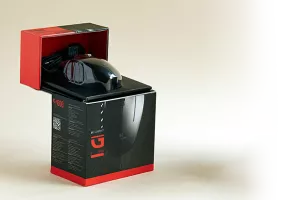When it comes to electronics, packaging is more than just protection. The right packaging ensures safety, functionality, and longevity of sensitive components. But what are the types of electronic packaging?
The different types of electronic packaging include protective materials like anti-static bags, foam inserts, and rigid containers. Each type serves a unique purpose based on the product’s needs.

Now that we’ve established the importance of electronic packaging, let’s explore the various packaging types and the specific materials used to ensure maximum protection.
What are the 4 types of packaging?
There are many types of packaging, but what are the four most common? Let’s take a look at these packaging types and how they’re used for different products.
The four main types of packaging are primary, secondary, tertiary, and transport packaging. Each type plays a unique role in the overall packaging process.

The four main types of packaging play specific roles, especially when it comes to shipping and handling electronic products. Understanding each type will help you decide what’s best for your electronics.
-
Primary packaging: This is the first layer of packaging that directly protects the product itself. For electronics, this could include cases, bags, or even custom-made plastic or foam containers. The goal of primary packaging is to shield the product from physical damage, contamination, and moisture.
-
Secondary packaging: This type is used to group multiple items together. In the case of electronics, secondary packaging might include a box or carton that holds several units of the same product. The secondary packaging provides extra protection from external forces, such as stacking pressure or impact during handling.
-
Tertiary packaging: This is used for bulk handling and storage. Typically, this involves larger boxes or containers that hold many units of the product in its secondary packaging. Tertiary packaging is most commonly used for palletizing and shipping electronics in bulk.
-
Imballaggio per il trasporto: Finally, transport packaging is designed to protect goods during transportation. It often includes sturdy corrugated boxes, pallets, and sometimes additional internal cushioning or straps. Transport packaging is essential for keeping products safe while being moved from one location to another, particularly over long distances.
In conclusion, each type of packaging serves a distinct purpose. For electronics, each layer of packaging helps ensure that the product remains intact, safe, and protected during storage, handling, and transportation.
What material is used in packaging electronics?
Choosing the right material is key when packaging electronics. But what materials are commonly used to protect these sensitive devices?
Materials like anti-static bags, foam, and bubble wrap are commonly used in electronic packaging. They prevent damage from impacts and electrostatic discharge (ESD).

The materials used in packaging electronics are chosen for their ability to protect against physical damage, moisture, and electrostatic discharge (ESD). Let’s take a look at the most common materials used:
-
Anti-static bags: These bags are designed to protect sensitive electronic components from static electricity. They are made from materials that prevent the build-up of static charge, which could potentially damage delicate electronics like circuit boards, chips, and semiconductors. There are two types of anti-static bags1: pink or silver bags, each serving a different level of protection.
-
Foam inserts2: Foam is commonly used to cushion and secure electronics inside their packaging. The foam helps absorb impacts and vibrations that could damage the components. Custom foam inserts can be molded to the specific shape of the electronics, providing additional protection and ensuring the product stays in place during transit.
-
Bubble wrap3: This is one of the most commonly used materials for protecting electronics during shipping. The air-filled bubbles provide a layer of shock absorption that helps reduce the risk of damage caused by impacts or drops. It is also a lightweight material, making it cost-effective for shipping.
-
Rigid containers: For high-end or fragile electronics, rigid containers made from strong materials like plastic or thick cardboard may be used. These containers offer superior protection against crushing or bending and are often used for items like laptops, cameras, or medical devices.
In addition to these materials, moisture-absorbing agents like silica gel are sometimes included in the packaging to prevent damage from humidity.
In conclusion, the choice of material in electronic packaging depends on the level of protection needed. Anti-static bags, foam inserts, bubble wrap, and rigid containers all work together to ensure the safety of electronic devices.
Conclusione
Packaging electronics requires careful planning and attention to detail. By using the right materials and techniques, you can ensure the safety of your devices throughout transit and storage.
-
Explore this link to understand how anti-static bags work and their importance in protecting sensitive electronics from static damage. ↩
-
Learn about the role of foam inserts in cushioning electronics and preventing damage during transit. ↩
-
Discover the benefits of bubble wrap in protecting electronics from impacts and ensuring safe shipping. ↩








